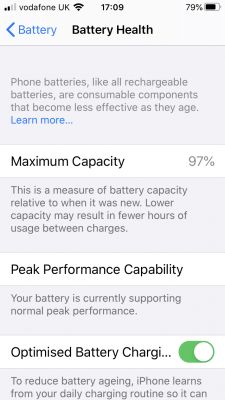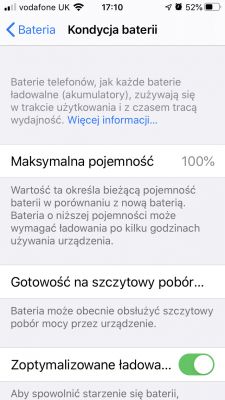While charging my E6553 phone, I see that the charge status LED changes to green after reaching 90%, it takes several dozen minutes to reach 100%.
And now the crux of the matter; if after this hour and reaching exactly 100%, I turn on the game (click Bubble Breaker) the battery level drops to 99% after a minute, but when I leave the phone connected to the charger for a few hours and turn on this game, then the 100% state lasts longer the record is 7 minutes.
The conclusions are:
- the battery after reaching 100% is still being charged
- the status indicator does not show the actual state of energy in the battery, but the theoretical state of this battery assumed by the programmer
My phone - depending on the time of calls - I charge every few days, it is often attached to the charger for several hours after the green LED appears.
In my subjective opinion, the working time between charges has not changed since I got it in May 2017 (it was bought in January 2015).
In my opinion, the service program does not provide for higher percentage indications, because an indication above 100% would lead to ambiguity on the principle that you can not pour more than the specified capacity into the bottle, and anything above it would be treated as cheating, while presenting the voltage in volts (V ) is not an option, because for most it is a meaningless numerical value. Only the program inside converts the battery voltage, charging current, charging curve - into a percentage indicator.
The parameters of the battery are not repeatable, like the meter pattern, and they have scatters, like a cross-eyed hunter

, many series are simply poorly made, which means that they do not maintain the assumed parameters. I will add that in times of "mass", even the most expensive brand, with the highest price - does not provide the highest quality.
It's almost a lottery - one will hit, many won't.
In another section, TOSHIBA TV was written about, which have one thing in common with it - the inscription, because the interior is identical to the TV from mass market stores.




